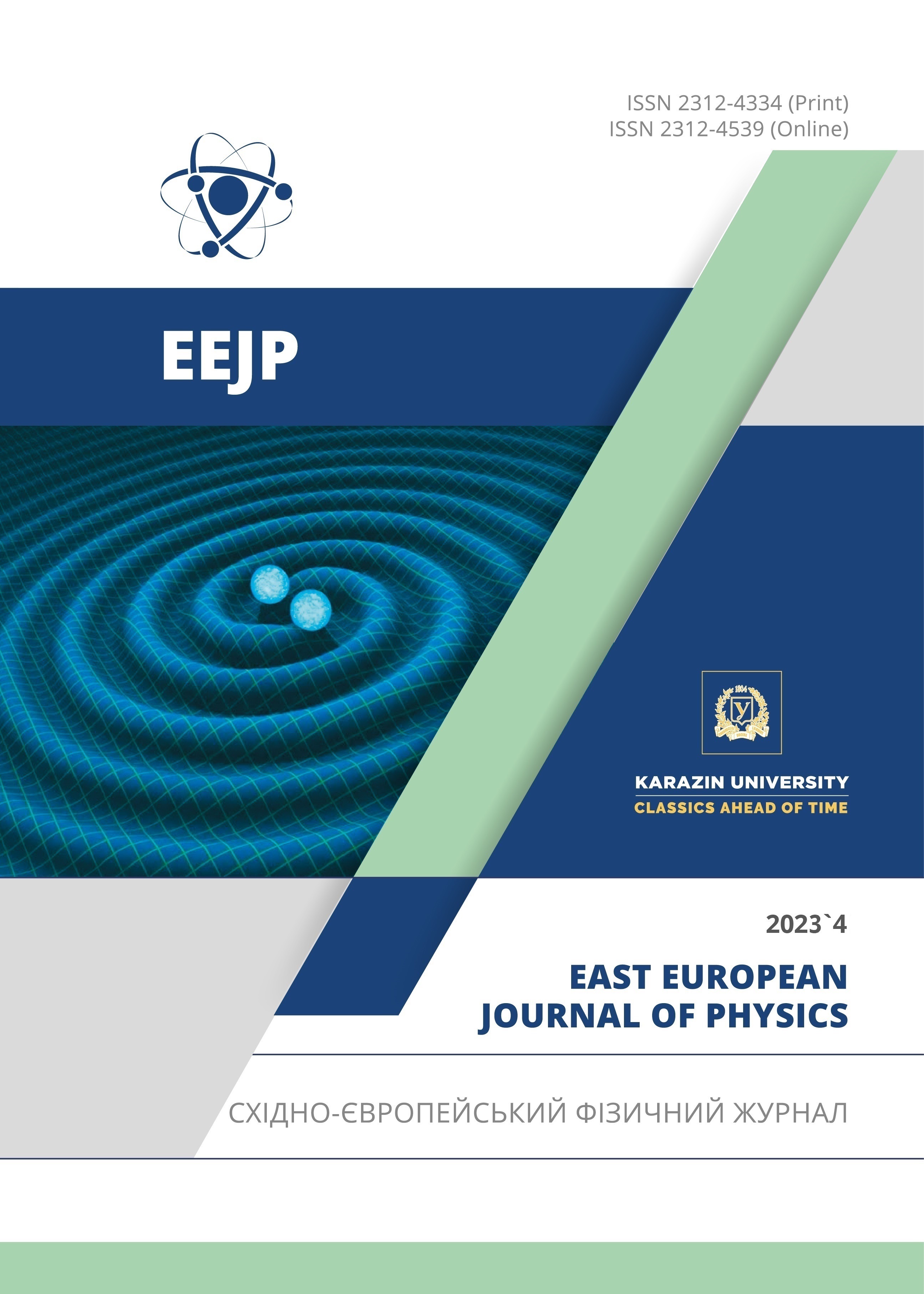Комп’ютерна модель системи формування потоків теплових запізнилих нейтронів для ядерної медицини
Анотація
В роботі в середовищі Geant 4 була розроблена комп’ютерна модель осередку системи формування потоків терапевтичних пучків сповільнених нейтронів, яка заснована на використанні запізнілих нейтронів поділу. Сутність такого джерела нейтронів полягає в тому, що при взаємодії потужного електронного пучка з комбінованою мішенню з вольфраму та мішенню яка містить подільний матеріал, відбувається реакція поділу; в результаті якої випромінюються нейтрони. Якщо перенести активовану таким чином мішень на декілька десятків метрів в систему формування потоків нейтронів, яка складається з отеплювача, захисту, коліматору та відбивача, ми отримаємо компактне джерело нейтронів для ядерної медицини. Вагомою перевагою такого джерела нейтронів є відсутність гама фону від прискорювача електронів та комбінованої мішені, при цьому буде непотрібна громіздка система захисту. В середовище Geant 4 була розроблена геометрія цього осередку та проведена низка експериментів на 107 нейтронів. При цьому використовувався фізичний лист QGSP BIC HP. Дослідження енергетичних спектрів нейтронів довело, що більше половини нейтронів, потоки яких формуються за допомогою такого осередку системи формування мають енергію < 20 кеВ, яка є придатною для використання в терапевтичних цілях. Аналіз отриманих в комп’ютерному експерименті даних дав можливість розробити модифікований осередок системи формування потоків терапевтичних пучків сповільнених нейтронів, який відрізняється від базового, наявністю цільного отеплювача з поліетилену з отворами для активованих мішеней, та відбивача з графіту. Аналіз отриманих даних довів, що в цьому разі кількість теплових нейтронів, які потрапляють на детектор зростає у 10 разів в порівнянні з базовим осередком, а енергія 80% частинок не перевищує 5 кеВ, що значно краще підходить для терапевтичних цілей.
Завантаження
Посилання
G.L. Locher, Am. J. Roentgenol. Radium. Ther. 36, 1 (1936).
A.M. Hughes, and N. Hu, Cancers, 15(16), 4091 (2023). https://doi.org/10.3390/cancers15164091
A. Wittig, and W.A.G. Sauerwein, Cancer Biother. Radiopharm. 38(3), 195 (2023). https://doi.org/10.1089/cbr.2022.0074
X. Cheng, F. Li, and L. Liang, Current Oncology, 29(10), 7868 (2022). https://doi.org/10.3390/curroncol29100622
L.-W. Wang, Y.-W.H. Liu, and F.-I. Chou, Cancer Communications, 38, 1 (2018). https://doi.org/10.1186/s40880-018-0295-y
L. Porra, T. Seppälä, L. Wendland, H. Revitzer, H. Joensuu, P. Eide, H. Koivunoro, et al., Acta Oncologica, 61(2), 269 (2021). https://doi.org/10.1080/0284186X.2021.1979646
L. Porra, L. Wendland, T. Seppälä, H. Koivunoro, H. Revitzer, J. Tervonen, L. Kankaanranta, et al., Cancer Biother. Radiopharm. 38(3), 184 (2023). https://doi.org/10.1089/cbr.2022.0059
V. Kasilov, S. Gokov, S. Kalenik, S. Kochetov, L. Saliy, V. Tsyats’ko, E. Tsyats’ko, and O. Shopen, East European Journal of Physics, (4), 160-163 (2021). https://doi.org/10.26565/2312-4334-2021-4-21
S.P. Gokov, S.H. Karpus, V.I. Kasilov, G.D. Kovalenko, and S.S. Kochetov, Problems of Atomic Science and Technology, 3(145), 133 (2023). https://doi.org/10.46813/2023-145-133
Geant4 Collaboration, Physics Reference Manual,
https://geant4 userdoc.web.cern.ch/UsersGuides/ForApplicationDeveloper/BackupVersions/V10.6c/fo/BookForApplicationDevelopers.pdf
Авторське право (c) 2023 Сергій П. Гоков, Віктор М. Горбач, Валентин Й. Касілов, Людмила М. Колпакова, Олена А. Люхтан, Євген В. Цяцько

Цю роботу ліцензовано за Міжнародня ліцензія Creative Commons Attribution 4.0.
Автори, які публікуються у цьому журналі, погоджуються з наступними умовами:
- Автори залишають за собою право на авторство своєї роботи та передають журналу право першої публікації цієї роботи на умовах ліцензії Creative Commons Attribution License, котра дозволяє іншим особам вільно розповсюджувати опубліковану роботу з обов'язковим посиланням на авторів оригінальної роботи та першу публікацію роботи у цьому журналі.
- Автори мають право укладати самостійні додаткові угоди щодо неексклюзивного розповсюдження роботи у тому вигляді, в якому вона була опублікована цим журналом (наприклад, розміщувати роботу в електронному сховищі установи або публікувати у складі монографії), за умови збереження посилання на першу публікацію роботи у цьому журналі.
- Політика журналу дозволяє і заохочує розміщення авторами в мережі Інтернет (наприклад, у сховищах установ або на особистих веб-сайтах) рукопису роботи, як до подання цього рукопису до редакції, так і під час його редакційного опрацювання, оскільки це сприяє виникненню продуктивної наукової дискусії та позитивно позначається на оперативності та динаміці цитування опублікованої роботи (див. The Effect of Open Access).








